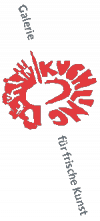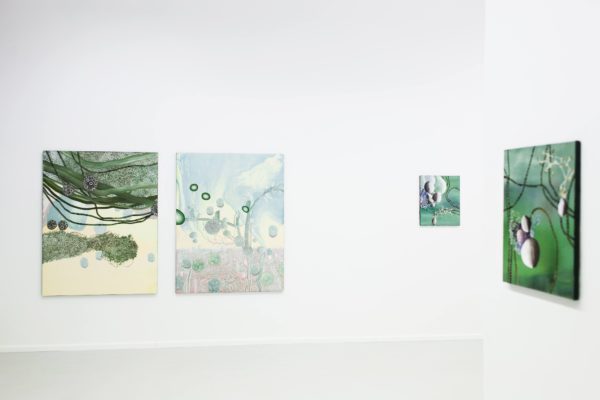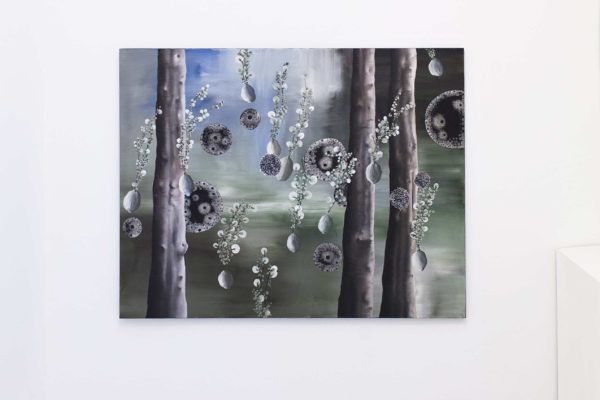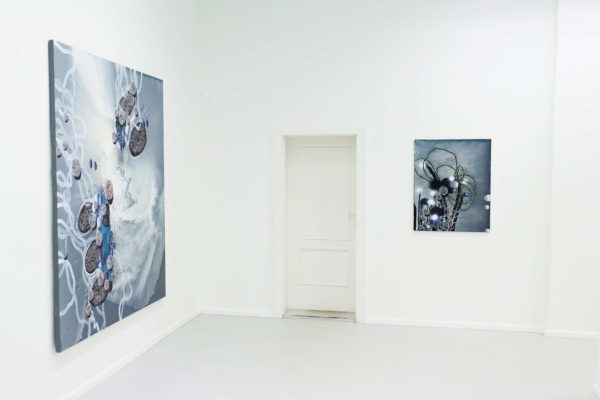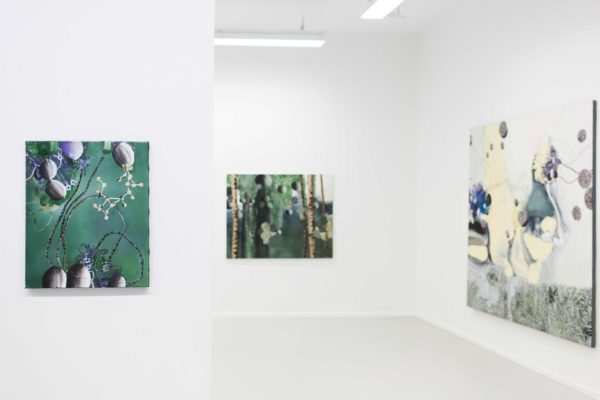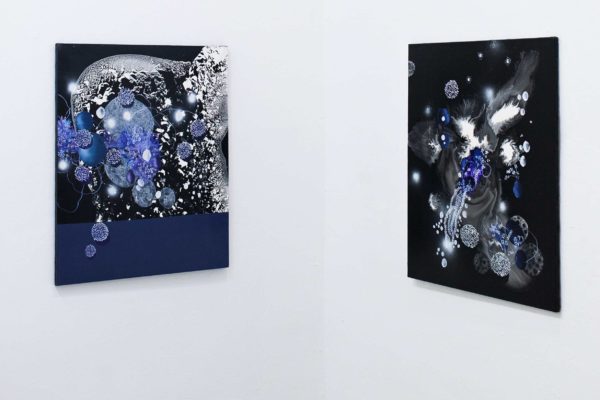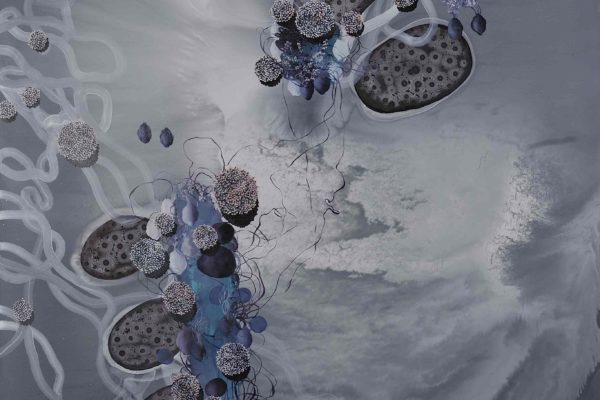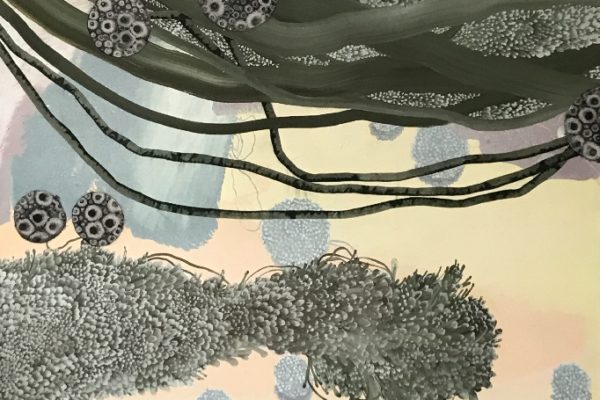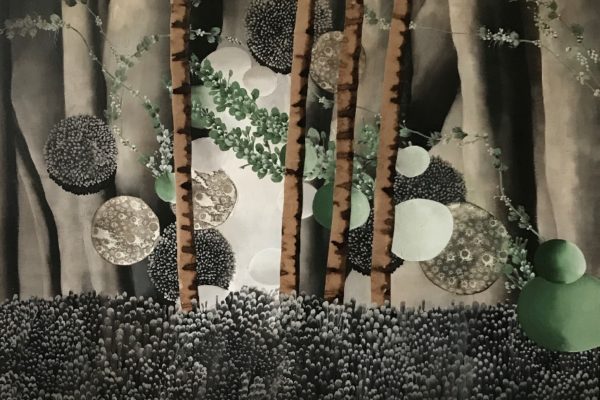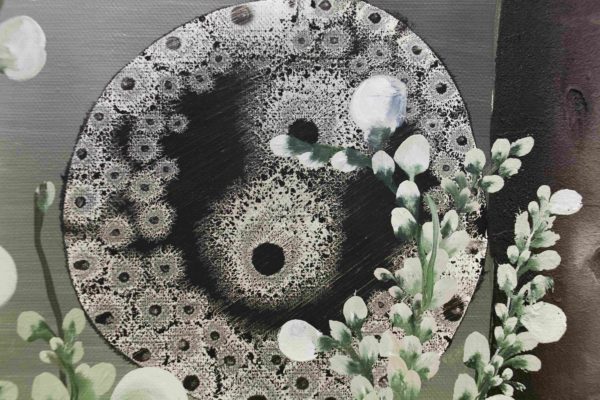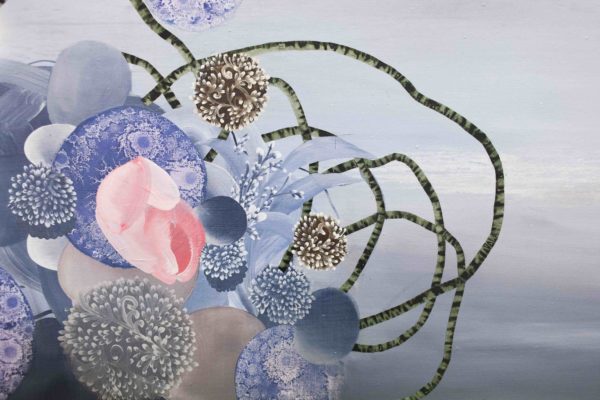We in- and exhale 17 times a minute, consuming around 12,200 liter of oxygen a day, while a tree, depending on its size and location, produces around 21,000 liter over the same period. The body of a grownup consists of a trillion cells of which 50 million die every second, while around the same amount comes into being. – In short: Living and being alive is not only a very remarkable state, moreover, it is a highly complex circle of the most diverse processes. And man has always been fascinated by the fragile balance it is based on.
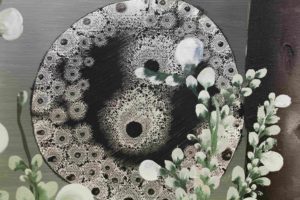
Detail from: Three trunks. 2018 • Oil on canvas
Abderrahim Yamou (*1959 Casablanca), or Yamou, as he is known for his work, developed an interest in biological phenomena from an early point on. After initial studies of biology at the University of Toulouse, which he gave up after a couple of semesters, he returned to his original passion in a roundabout way. His career as a painter took a similar course. During his childhood in Casablanca the young Yamou traced everything he found: onto walls, into text books or on large sheets of kraft paper, however, it never occurred to him to become an artist. So he eventually decided to go for sociology, earned a master‘s degree and began to work on a doctoral thesis about the development of Moroccan Art in context of his country‘s road to independence. Things took a turn in 1986, when Yamou, at the age of 27, finally decided to follow the path of art. He moved to Montreuil, a lively quarter on the periphery of Paris, which had attracted generations of immigrants from the Maghreb since the late 19th century. Today it is home to reams of studios and artist workshops. The process of Yamou‘s artistic self-discovery began in a large and light-flooded backyard studio. He was initially occupied with entirely abstract paintings made of sand, metal and wood. In the following, works that were inspired by prehistoric motifs in front of abstract surfaces came into existence. A little later he created befogged landscapes which he gradually reduced to their individual components, in the end leaving the canvas structured by ornamental and vegetable elements. Detailed accounts of plants would move to the artist‘s center of attention. In the early 2000s Yamou eventually attained his present visual language, a style that seems to gain inspiration from microscopical views of flora at very first sight.

La visite. 2015 • Oil on canvas. 146 x 114 cm
When observing the painting La visite (2015), it feels as if one is looking through a microscope directly into the inside of a plant: in a yellowish-blue liquid, various circular structures reminiscent of plant cells swim next to white and green-leafed plant balls and delicate pink and green plant seeds. At the same time, from a multi-layered epidermis in the lower part of the picture, grow isolated branches and twigs, dainty at the flower-sprouting ends. The pastel, almost sunny colours of the painting, however, stand in meaningful contrast to the artificial light of a microscope.The observer soon realizes that Yamou‘s imagery goes far beyond an objective account of photomicrographs. He abandons the rules of a purely scientific image by adding and transcending dimensions, which he eventually unites in astonishingly balanced compositions.
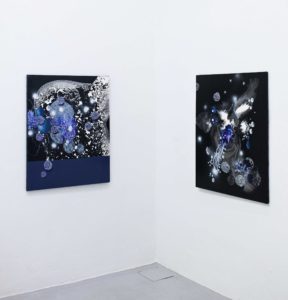
left: Inside 5. 2012, right: Nuit 2. 2013 • Each oil on canvas, 100 x 80 cm
An intensive treatment of color fields and -structures is characteristic of several works from the early 2010s, among them Inside 5 (2012) and Nuit 2 (2013). Both share a gloomy and mysterious atmosphere and – even though they take up the familiar plant balls and round cell structures again, this time in gray, white and purple – it is the color that adds decisive structure to these paintings. In Nuit 2 a furrowed and tough mass of gray paint towers in front of a black background, while the black-and-white color fields in Inside 5 protrude like lunar craters in front of a monochrome background. And we are no longer visitors of the inner world of a plant, as Yamou suddenly catapults us into space; into a cosmos where the artist determines the rules; a cosmos characterized by the same agravic balance that we find in Yamou‘s botanical accomplishments. At times Yamou leaves the observer in uncertainty about which world he is actually in, the two large-size works Les amas bleus (2012) and Les amas jaunes (2012) are particularly impressive examples of this phenomenon.
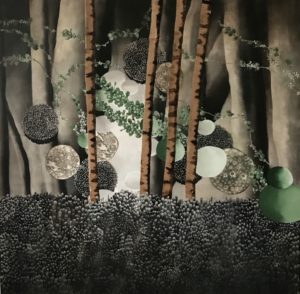
Square 1. 2018 • Oil on canvas. 100 x 100 cm
Another recurring element of composition is the horizontal division in the lower third of the canvas. In Inside 5 he realizes the delineation by means of a purple color field, playfully overleapt by several plant balls that add spatial impression. Similar to Les amas jaunes and La visite, Yamou places an organic structure in the lower margin of his later work Square 1 (2018), which resembles fungal spores or corals. On the one hand, this dense structure once again takes up the consistency of the plant balls, here rendered in black and gray, on the other hand, there is a clear barrier towards the observer, a barrier that is trespassed in this work, too. In order to increase the spatial impression, Yamou often employs recurring mounted elements. In this work, for example, he places four long and narrow chromosomal strands (or maybe tree trunks?) on the canvas. Behind these strands we see floating cell nuclei, plant balls and sprouting seeds and blossoms which, on their part, are surrounded by an almost impenetrable forest that only allows for a little light to shine through in the center. The assumption that the coarse vertical structure could be tree trunks finds support in the title of the work Three trunks (2018), which is characterized by a similar, yet more open arrangement. However, caution is advised, as “trunk“ may also refer to a trunk of nerves or vessels and the title rather increases the linguistic and figurative ambiguity than solving it.
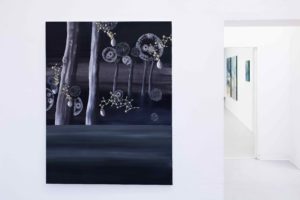
Molécules G2-18. 2018 • Öil on canvas. 146 x 114 cm
Another work that must be seen in close connection with Three trunks is the picture Molécules G2-18 (2018). In comparison with earlier works, it brings up an entirely new pictorial element the artist began to use in 2018 only: molecular structures. With the same coloring as the chromosomal strands in Square 1, the molecules, surrounded by seeds and round cells, drift through the dark forest that we have already become acquainted with. Despite the weightlessness of the smaller pictorial elements, the leafless tree trunks and the work‘s clearly reduced and gloomy palette contribute to a strange feeling of an underlying threat or maybe some sort of sorrow. In this case the feeling is stronger than the predominantly positive approach to the quest for the secrets of life in most of his works. Other late works with molecular structures, such as the series Molécules P-18, bear a more calm and quiet energy while the coloring remains more subdued.
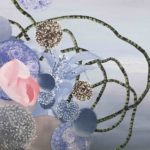
Detail from: Hésitations. 2014 • Öil on canvas. 92 x 70 cm
However, Yamou‘s works should not just be seen as mere expressions of his fascination for biology and all related elements and processes, which becomes particularly obvious in paintings such as Les sensibles (2015), Hésitations (2014) or the aforementioned La visite. Their titles virtually invite the observer to approach the depicted subjects from a metaphoric level: The shy pink in The Sensitive, the graceful play of forms and colors in Visit or the inert convergence of forms in soft shades of pink, purple and gray in Hesitations – all of them suggest that many of Yamou‘s works do not only imply the step from micro- to macro-level, but also to meta-level. The artist about his work: “In my work the obvious formal reference to biology or to botany is the sign of a constant will to probe the living and to paint the energy necessary for the creation of life itself. The world of plants – an endless source of new forms — is a fertile metaphor of our human interactions and aspirations.”[1]
Eventually, Yamou‘s works are expressions of the essence of all his facets and perspectives: of a biologist, a sociologist and, first and foremost, of a painter with an equally strong love for life, art and nature. Accordingly, it was a consequential decision to make Tahannahout, a small town near Marrakesh, one of his homes and workplaces in 2005: His studio is right next to a large and lush garden, where the artists can find inspiration and dry his works in the sun, while his dogs doze in the shade.
[1] Yamou, Working from Life. 2016
text: Claudia Heidebluth, translation: André Liebhold
photos: Alexandar Bondar
Interview with Yamou
video by: Diana Vishnevskaya & Igor Zwetkow
